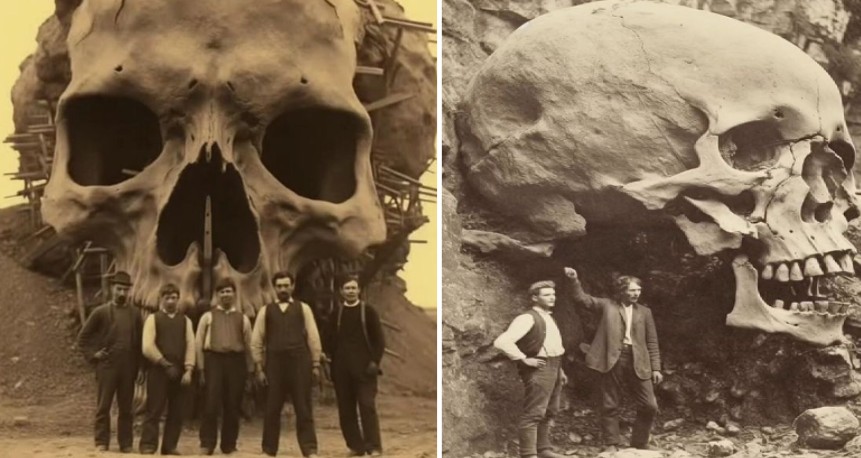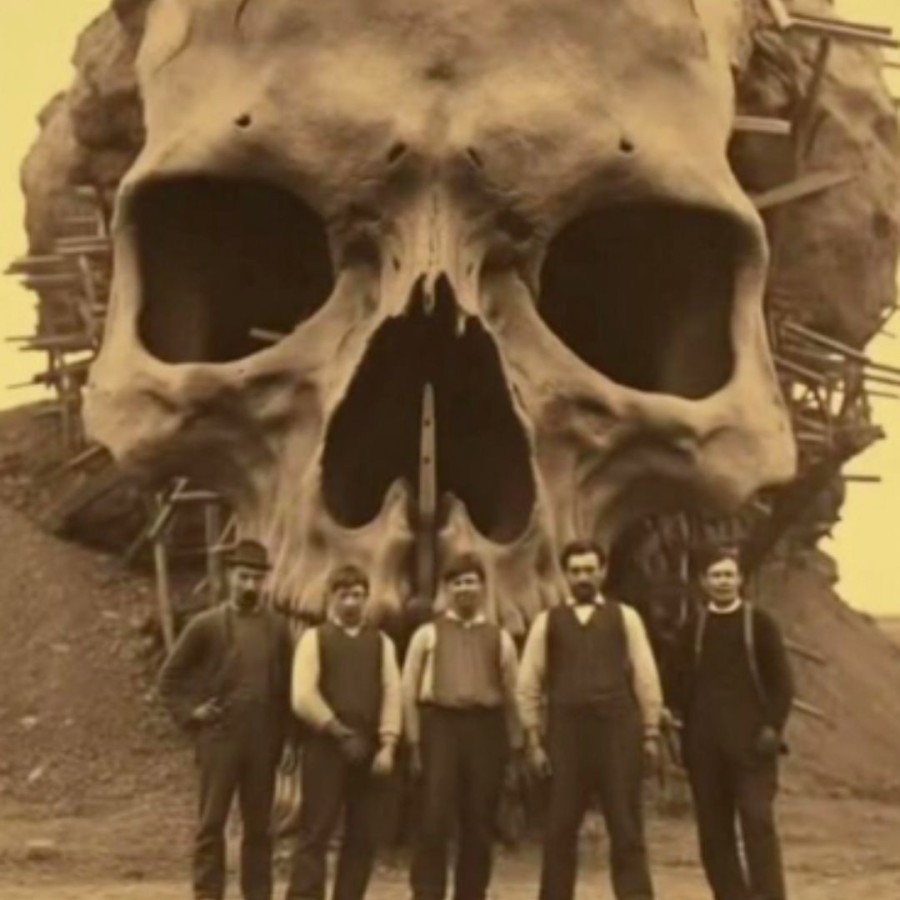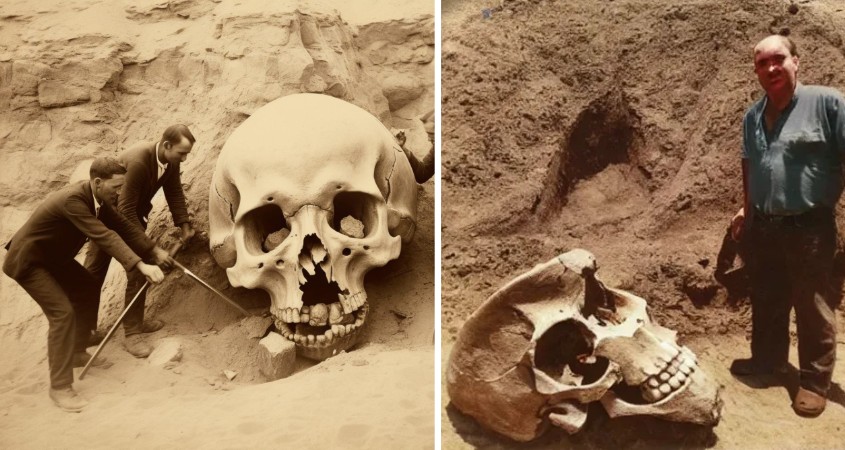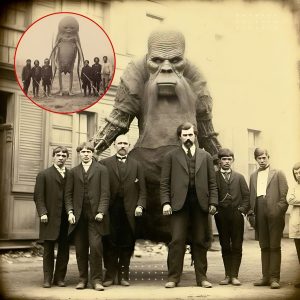In a groundbreaking discovery, archaeologists have unearthed a mysterious skull that may belong to the Nephilim, a race of giants mentioned in ancient texts. This find has the potential to revolutionize our understanding of history and mythology, providing tangible evidence of beings that were once thought to be purely mythical.

The skull was discovered in a remote excavation site, deeply buried beneath layers of sediment. Its enormous size and unusual features immediately set it apart from typical human remains. The team of archaeologists, led by Dr. Evelyn Hughes, has been meticulously studying the skull to determine its origins and significance.

Dr. Hughes described the skull as “unlike anything we’ve ever seen before.” Its dimensions and structural anomalies suggest it belonged to a being significantly larger than modern humans. Preliminary analysis indicates the skull could be several thousand years old, dating back to a time when ancient texts, such as the Bible and the Book of Enoch, mention the existence of giants known as Nephilim.

The discovery has sparked intense debate within the scientific community. While some researchers are skeptical, arguing that the skull could be an unusual variant of early human species, others believe it may indeed be evidence of the legendary Nephilim. This latter group points to the skull’s size and unique characteristics as proof that it does not fit into the known categories of human evolution.
Historians and mythologists are equally intrigued. The Nephilim are described in various ancient texts as the offspring of “the sons of God” and “the daughters of men,” possessing extraordinary size and strength. These beings were often depicted as playing significant roles in the ancient world, their existence intertwined with the divine and the human.
If the skull is conclusively identified as belonging to a Nephilim, it could validate many ancient myths and scriptures, offering a new perspective on the history of humanity. This discovery would not only rewrite the narrative of human evolution but also bridge the gap between myth and reality, providing concrete evidence that some legends may be grounded in truth.
The archaeological team is continuing its research, utilizing advanced technologies such as DNA analysis and carbon dating to gather more information about the skull. As the investigation progresses, the world eagerly awaits further revelations that could shed light on one of history’s most enigmatic mysteries.





